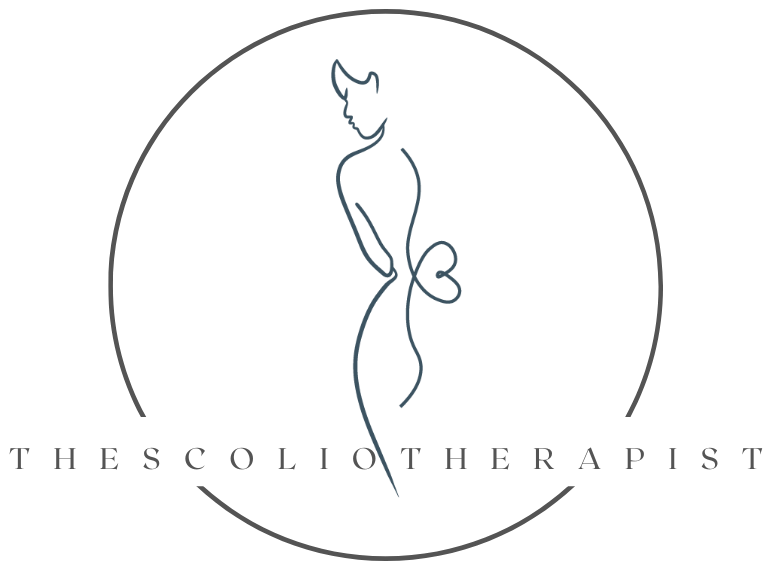How Scoliosis Affects Your Digestive System and Other Internal Organs
When we’re talking about scoliosis, we often focus on the spine and musculoskeletal system. But your curve can affect so many other parts of your body! And one of the most overlooked areas is the viscera — your internal organs. That includes your digestive system and reproductive system, both of which can be impacted by scoliosis.
The Importance of Understanding How Scoliosis Affects Internal Organs
Sometimes physical therapists and other healthcare professionals (myself included) can get into a rut. We focus on our own areas of expertise and let our sometimes-narrow lane of expertise guide our patient interactions. But when the techniques we feel most comfortable with don’t work, it’s crucial to be humble and willing to adapt. If we can admit what we don’t know and learn something new, it gives us new ways to support our patients.
I want to help each of my clients understand their curve as much as possible. And one of my goals for this year is to learn more about how scoliosis affects other areas of the body. As I’ve researched and worked with other health and wellness experts, I’ve found so much new information that has been extremely helpful for myself and my patients. (Check out this episode on the lymphatic system!)
Recently, I got to attend a course taught by visceral manipulation expert Anna Hartman (MovementREV). Her course on the LTAP (locator test assessment protocol) is a fantastic resource for physical therapists and other healthcare professionals — it can make it easier to find and address the true source of pain (which isn’t always the textbook answer). Alternative methods like the LTAP give us another tool we can use to help patients who don’t experience good results from “traditional” scoliosis treatments, like the Schroth Method or Pilates.
Scoliosis and Your Internal Organs
Your curve can affect your viscera, specifically the organs in your digestive and reproductive systems.
Digestive system
Scoliosis impacts your digestive system both directly and indirectly. Many scoliosis patients experience digestive issues such as bloating, stomach pain, acid reflux, nausea, diarrhea, and constipation. These symptoms occur because the spinal curve puts additional pressure on digestive organs, making it harder for them to function improperly.
We tend to think that the main job of the musculoskeletal system is to move the body. That’s why so many aspects of scoliosis treatment are focused on movement. But your skeleton is also designed to protect your internal organs! And when it’s misaligned, those organs may not receive the “ideal” protection.
If you get back or chest pain, it could be coming from your ribs and spine. But it could also mean that your liver, diaphragm, or pericardium (the sac surrounding your heart) are under pressure. Likewise, if you feel pain in your hips and pelvis, it might be your intestines, stomach, and other digestive organs.
Understanding the interactions between the spine and the digestive system is crucial to figuring out how to reduce pain and other scoliosis symptoms. If you’re only addressing chronic pain in the back, neck, or hips with exercise and alignment work, you might not see much progress if the true source of the pain is an internal organ.
Fortunately, there are several ways to help reduce the digestive symptoms that often accompany scoliosis:
Stomach massage for digestion
Abdominal massage and breathing with a Coregeous Ball
Treating the internal organs directly can help relieve chronic pain and digestive issues.
Reproductive system
Scoliosis can also impact your internal reproductive organs. The pelvic misalignments related to your curve can impact the organs housed inside the pelvic cavity, including the bladder, uterus, or prostate. And if those organs are misaligned or under pressure from pelvic and spinal misalignment, they can contribute to pain in the lower back and/or the SI joint.
Because your curve is asymmetrical, it can cause additional pain in certain areas of the reproductive system. For example, scoliosis can make menstrual cramps more intense in general or on one side of the body. As with the digestion organs, there is a massage technique you can use to reduce the pain of menstrual cramps.
Additionally, scoliosis can contribute to pelvic floor issues and make sexual intercourse painful, especially for females. This type of pain is generally caused by muscle and ligament tightness that’s created by the spinal curve. Communicating openly with your partner about which positions work best can help relieve some of the pain during intercourse. And pelvic floor therapy can also help reduce pain and other common symptoms such as occasional incontinence.
Pay Attention to Your Internal Organs
It’s easy to focus entirely on your spine and muscles when you’re treating scoliosis. But your curve can also impact your internal organs, causing issues with digestion, menstruation, and sexual activity. If you’re experiencing pain or other uncomfortable issues, consider using massage or other visceral manipulation techniques to address the internal organs directly.
If you want more tools to manage your scoliosis and reduce chronic pain and other symptoms, join The Scoliosis Strength Collective! This small-group coaching experience is completely virtual, so you can attend from anywhere. I’ll help you understand your curve better and give you the tools you need to improve your posture, reduce pain, and mitigate some of the effects scoliosis has on your life. Get all the details about The Scoliosis Strength Collective to see if it’s the right fit for you.
If you enjoyed this episode, please leave a rating and make sure you’re subscribed to the podcast to get every episode when it airs.
Resources Mentioned
The Scoliosis Strength Collective
Ahead of the Curve: Episode 35 - The Link Between Scoliosis and the Lymphatic System
